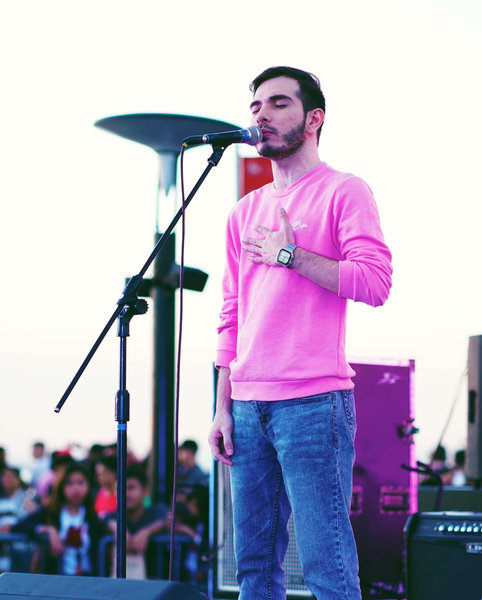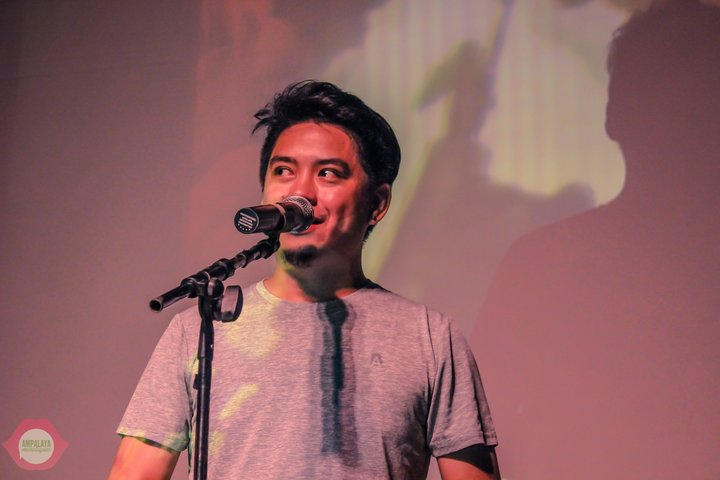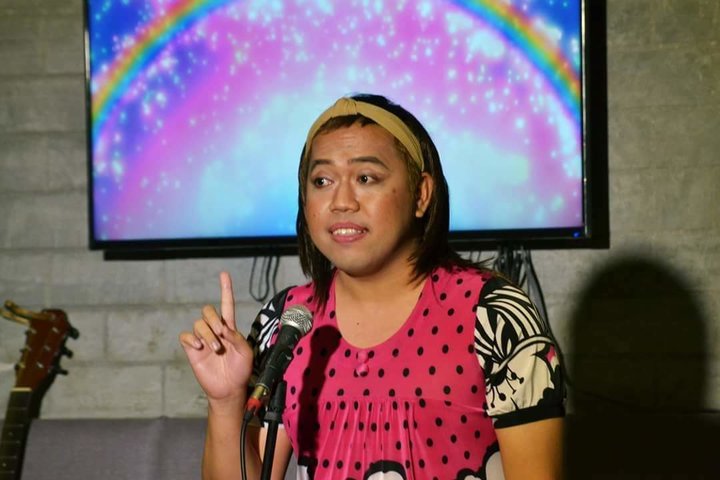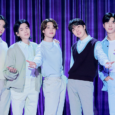Poetry comes in any manner of shape, size, or form. While poetry has always been deeply beautiful it is truly in the past few years that it’s become widely accessible. Spoken Word, which is poetry performed, has been one of the most significant catalysts to this movement. Concepts and ideas that were once difficult to convey become relatable to the public once fleshed out through performance. Here are some local Spoken Word Artists — some poets, others monologists — who we love for bringing the written word to life:
22. Mark Ghosn
facebook.com/AmpalayaMonologues/
How would you describe your writing or what do you write most about?: I get referred to as “the bitter writer” cause I write mostly about the different kinds of bitterness in love and in life.
What inspires or informs your writing?: I try to make it as relevant as possible. I get inspired by what’s going on in the world and combine that with the real stories of people I meet online or in real life.
What do you hope to achieve through this art form?: I think this art form has a lot of potential to entertain, educate and empower people. If the bitterness that I write can somehow contribute to making someone feel better, think better, or know better, then my work as a writer is done.
21. Carlo Bonn Felix Hornilla
How would you describe your writing or what do you write most about?: My pieces tend to be of the storytelling type. In poetry, we aim to say things by not saying it. I’d like to think of my pieces as a persona sharing his stand about social issues through telling a simple, funny story.
What inspires or informs your writing?: The news; personal accounts I hear from people affected by a certain issue; everyday stories from people I spend time with.
What do you hope to achieve through this art form?: My greatest hope for spoken word is for people to have respect for it as we respect other performance arts such as dance and theater. My greatest hope for MY spoken word is for my pieces to echo the sentiments of those who agree with me, to convince those who do not have an opinion to take a stand, or at least, to be a way to start discourse for those who disagree with my take.
20. Ian Sudiacal
Instagram: @ianchristophersudiacal
How would you describe your writing or what do you write most about?: After thinking or stumbling upon a message, what comes to mind next is the approach: what will I ‘write on the box’ or what am I going to use to wrap it. We’re always told to ‘think outside the box’ but since that is the go-to advice, I believe that ‘outside’ is where clichés are because that is where the people are. Come to think of it, ‘thinking outside the box’ is a cliché.
I’m not saying that what I write most of the time are never-been-written-before ideas but I think of ways to present it in a new light or in an unexpected way. Needless to say that the box shouldn’t be empty either.
The things I write about range from love poems for wedding clients and ‘dead people’ to advocacy pieces that talk about mental health, family, historical revisionism, government and fake news.
What inspires or informs your writing?: Except when there are deadlines to meet or a project to finish, I often write when I am ‘at the moment’. Mostly after reading a news article and/or its comment section; a friend shared fake news with a ‘cute’ caption but doesn’t happen now since I’ve unfriended or unfollowed them already; Or when I remember something. Or someone. Basically my ‘atm’, be it the present or the past, is my ink.
What do you hope to achieve through this art form?: When I started way back 2015, what I wanted was just to simply share the truths and the lies I tell myself. And it saved me from what I was going through then.
But more than the art form, what saved me was the community. I became friends with amazing and like-minded people.
Now, I also promote the art and the community in my own little way by providing a venue to artists and enthusiasts alike by organizing spoken word events and poetry submissions feature through the Spoken Word Philippines page and with my Collaboratory.PH friends.
19. Sonson O.
How would you describe your art form?: In Ampalaya Monologues, Mark Ghosn writes all the monologues that we perform. As a monologist, our job is to give life to all the characters that Mark Ghosn writes so we can give inspiration to all the people who can relate.
What inspires or informs your art form?: In my case, my art form is performing rather than writing. Being a member of the LGBT Community, I am always inspired to perform and keep on going especially when our audience compliments us and says that they can relate to our performances. The audience is very thankful that we let ourselves become an instrument and be the voice for the people that are having a hard time expressing themselves and their feelings.
What do you hope to achieve through this art form?:I hope that my performances will reach a lot of people so that they will be able to understand the LGBT Community; not for what they are but for who and what can we do and contribute to the world.
18. Ryan Macasero
Twitter: @ryanmacasero Instagram: @ryangmacasero
How would you describe your writing or what do you write most about?: I’d describe my spoken word as a meeting of hip hop and journalism. I write mostly about sociopolitical issues from the lens of my intersectional identity as a Cebuano; as the son of Filipino immigrants who grew up in the diaspora; as a “balikbayan” since 2013; and as a member of the LGBTQIA+ community.
My writing is highly opinionated and I don’t see it as a bad thing when it’s tagged as political. I’m with the late Toni Morrison who said: “All good art is political.”
At the end of the day, I just see it as art that is informed by facts, data and real-life stories.
*What inspires or informs your writing?: I spent my early years in the San Francisco Bay Area, the United States, where hip hop and spoken word is really popular. Although I can’t call myself a rapper because I suck at freestyling, I grew up addicted to Def Poetry Jam on HBO, and staring at music videos on BET and MTV until my parents had to cut off the cable from our house.
But what informs my writing is my experience as a journalist.
Because of the nature of my work I observe all kinds of violence, social injustice and inequality around me. I often found myself frustrated and deeply affected emotionally in my reporting on the struggles of groups like OFWs, laborers, farmworkers, LGBTQIA+s, and even fellow journalists.
I’ve found spoken word — where I was allowed to be more emotional and opinionated —to be cathartic and a good way to sort out how covering these stories affected me emotionally.
What do you hope to achieve through this art form?: I try not to overthink it, but what I hope to achieve through this art form is actually not much different than what I hope to achieve through journalism — to speak truth to power, to inform, maybe inspire, and/or to simply make people think.
When I start to overthink doing this art, I bring myself to this popular quote about art (although I can’t verify who said it first) it goes: Art should comfort the disturb and disturb the comfortable.
At the end of the day, that’s all I want to do as an artist.







